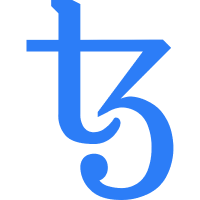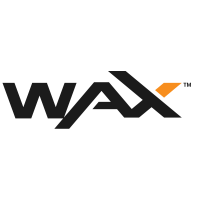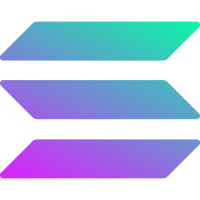
Imagine you have a one-of-a-kind painting by your favorite artist, a masterpiece that cannot be duplicated or replaced. That’s exactly what an NFT is in the digital space! NFTs are digital certificates of authenticity, each representing a unique piece of content like artwork, music, videos, virtual real estate, and even tweets. The NFT market has experienced an unprecedented surge, with total sales surpassing a remarkable $10 billion in the first half of 2023, reflecting a phenomenal growth rate of over 300%!
Just like selecting the perfect canvas for a painting, the blockchain you choose plays a crucial role in the success of your NFT journey. Different blockchains offer various features, such as security, scalability, transaction speed, and community support. Picking the one that aligns with your project’s requirements is essential to ensure your NFTs thrive in the ever-expanding digital marketplace.
This blog is your ultimate guide to navigating the world of the best blockchains and empowering you, the creative NFT maker! With this knowledge, you’ll be equipped to make an informed decision about which blockchain is the perfect fit for your unique creations.
Understanding NFTs
In the vast digital landscape, revolutionary technology has emerged, transforming the way we perceive ownership and value. Blockchain, a decentralized and immutable ledger, serves as the backbone of the digital revolution, and at its forefront, lie the enigmatic Non-Fungible Tokens (NFTs). In this chapter, we embark on a journey of discovery, unraveling the mysteries of blockchain technology, and exploring the captivating world of NFTs.
Non-Fungible Tokens, or NFTs, have become a buzzword in the digital sphere, captivating the imaginations of creators, collectors, and investors alike. But what sets NFTs apart from their fungible counterparts like cryptocurrencies? The answer lies in their unique properties.
Unlike cryptocurrencies such as Bitcoin or Ethereum, which are interchangeable and hold equal value, NFTs are one-of-a-kind, indivisible assets. Each NFT carries a distinct value, representing ownership of a specific digital item, whether it’s digital artwork, music, virtual real estate, or even a rare virtual collectible in a gaming universe. This uniqueness and exclusivity imbue NFTs with inherent value and scarcity, attracting collectors and enthusiasts seeking to own a piece of digital history.
Read Also: Top NFT Development Companies
Blockchain Technology and its Role in NFT Creation and Management
Imagine a vast network of interconnected computers, working in harmony to record and verify transactions without the need for a central authority. This is the essence of blockchain technology. At its core, a blockchain is a chain of blocks, each containing a record of transactions, cryptographically linked to the previous one. This secure and transparent structure ensures that once data is recorded, it becomes virtually immutable, safeguarding against tampering and ensuring data integrity.
How does this relate to NFTs? Well, NFTs are born from the very essence of blockchain’s immutability and uniqueness. Each NFT is represented as a distinct digital token, attributed with a unique identifier and data that sets it apart from any other token. This inherent uniqueness, enabled by blockchain’s underlying technology, grants NFTs their exclusive nature, making them ideal for representing digital assets that demand provenance and scarcity.
Furthermore, blockchain’s decentralized nature plays a pivotal role in NFT creation and management. Instead of relying on a central authority, NFTs are governed by smart contracts, self-executing code that sets predefined conditions and automatically executes actions once those conditions are met. Smart contracts enable seamless interactions between NFT creators, owners, and marketplaces, ensuring transparency, fairness, and automated enforcement of rules.
Read Also: Top 10 Blockchain Platforms
Benefits of NFTs
The benefits of NFTs extend beyond their rarity. NFTs introduce new possibilities for creators to monetize their digital creations directly. By tokenizing their work as NFTs, artists can establish verifiable ownership and copyright of their digital art, ensuring they receive royalties with each subsequent sale on the secondary market. This revolutionary aspect empowers artists and content creators, granting them more control and fair compensation for their creative endeavors.
Additionally, NFTs enhance the overall digital experience by enabling true ownership and interoperability. Virtual items purchased as NFTs can be transferred and used across various platforms and virtual worlds, creating a seamless and immersive user experience that transcends traditional silos and boundaries.
Read Our Blog: How to Build an NFT Marketplace from Scratch
Real-World Use Cases of NFT Projects
The rise of NFTs has given birth to an array of groundbreaking use cases that highlight the technology’s boundless potential. From empowering artists to promoting environmental causes, NFTs have sparked creativity and ingenuity across various industries.
One of the most significant success stories is within the art world. Renowned artists have embraced NFTs as a means to showcase their digital art, reaching a global audience and securing substantial earnings through auctions and direct sales. The NFT art market has witnessed astonishing sales, with masterpieces fetching millions of dollars, democratizing art ownership, and providing a new paradigm for the art market.
Beyond art, NFTs have made a splash in the gaming industry, where virtual assets and collectibles have become hot commodities. Virtual real estate, rare in-game items, and player-owned assets have been tokenized as NFTs, unlocking new revenue streams and engaging experiences for gamers and developers alike.
Moreover, NFTs have demonstrated their potential in the realm of philanthropy. Charitable organizations have harnessed the power of NFTs to raise funds for vital causes, leveraging the emotional value of digital art and collectibles to support environmental initiatives, humanitarian efforts, and other charitable ventures.
Blockchain technology and NFTs have revolutionized the digital landscape, offering a glimpse into the future of ownership, creativity, and commerce. The immutable nature of blockchain ensures that NFTs remain authentic, unique, and valuable, while their decentralized nature empowers creators and users alike. With an ever-expanding array of real-world applications and success stories, NFTs are poised to shape the digital world for years to come, unlocking a new era of possibilities for creators, collectors, and communities worldwide.
Factors to Consider When Choosing the Best Blockchain for NFT Projects
In the vast and ever-evolving landscape of blockchain technology, the emergence of Non-Fungible Tokens (NFTs) has undeniably captured the imagination of creators, collectors, and investors worldwide. As NFTs continue to gain momentum, selecting the right blockchain for your NFT project becomes a pivotal decision that can shape the success and longevity of your digital creations. In this chapter, we delve into the critical factors that should guide your choice and lead you to the top blockchain platforms for your NFT ventures.
- Security and Decentralization: Security stands as the bedrock of any blockchain, and when it comes to NFTs, ensuring the utmost protection of your unique digital assets is of paramount importance. A robust blockchain with strong cryptographic principles and a decentralized network reduce the risk of vulnerabilities and single points of failure, safeguarding your NFTs from potential hacks or unauthorized access.
- Scalability and Transaction Speeds: In the fast-paced world of NFTs, the ability of a blockchain to handle a high volume of transactions is a decisive factor. Scalability ensures that your NFT marketplace or platform can accommodate a growing user base and maintain smooth, speedy transactions without bottlenecks or delays. High transaction speeds are crucial to provide a seamless user experience, preventing frustrating delays when minting, buying, or selling NFTs.
- Smart Contract Support and Flexibility: Smart contracts form the backbone of NFTs, enabling the automatic execution of predefined conditions and terms. The blockchain you choose should support a flexible and developer-friendly smart contract environment, allowing you to create innovative and customizable NFTs that can adapt to the unique demands of your project.
- Community and Developer Support: A thriving community and active developer ecosystem are vital aspects of a successful blockchain for NFTs. Engaged communities foster networking, collaborations, and broader adoption of NFTs, while developers’ support leads to continuous improvements, feature expansions, and faster issue resolutions, ensuring the platform remains vibrant and future-proof.
- Environmental Impact and Sustainability: As the environmental impact of blockchain technology garners increasing attention, environmentally sustainable blockchains have become a significant consideration. Look for platforms that utilize energy-efficient consensus mechanisms and aim to minimize their carbon footprint, ensuring that your NFT creations align with eco-conscious values.
- Interoperability with Other Blockchains and Marketplaces: Interoperability is a key aspect of the best blockchain for NFT projects. The ability to seamlessly interact with other blockchains and NFT marketplaces opens up new possibilities for cross-platform collaborations, asset transfers, and community engagement, expanding the reach and utility of your NFTs.

Leading 10 Blockchains for NFTs
As the NFT ecosystem continues to diversify, several prominent blockchain platforms have emerged, each vying to become the go-to choice for NFT creators and collectors. Let’s explore an overview of the top 10 blockchains that have made a significant impact on the NFT space:

1. Ethereum
Ethereum, the second-largest cryptocurrency by market capitalization, is synonymous with NFTs. As the pioneering platform for smart contracts, Ethereum introduced the ERC-721 and ERC-1155 token standards, which have become the foundation for the NFT ecosystem. These standards enable the creation of unique and indivisible tokens that represent various digital assets, from digital art and music to virtual real estate and virtual collectibles.
With an established and robust infrastructure, Ethereum hosts a multitude of NFT marketplaces and platforms that cater to a diverse range of creators and collectors. Its thriving developer community continues to innovate, enhancing the functionalities and scalability of the Ethereum network. However, its success has come with some drawbacks, including network congestion during peak times and high gas fees that can deter smaller creators and collectors.

2. Binance Smart Chain (BSC)
Binance Smart Chain (BSC) is a prominent contender in the NFT space, offered by the world's leading cryptocurrency exchange, Binance. BSC emerged as a Layer 1 blockchain with a focus on interoperability and compatibility with Ethereum's EVM (Ethereum Virtual Machine). This allows developers to port their Ethereum-based smart contracts to the BSC network with ease.
One of the key advantages of BSC is its lower transaction costs compared to Ethereum. This affordability has attracted NFT creators and collectors looking for more cost-effective options without sacrificing the robust tooling and development resources offered by Ethereum. The growing NFT ecosystem on BSC showcases a vibrant marketplace with a variety of digital assets and virtual collectibles.

3. Flow
Flow is a blockchain platform purpose-built for NFTs and developed by Dapper Labs, the team behind the wildly successful NBA Top Shot. With a focus on user experience and scalability, Flow utilizes a unique consensus mechanism known as "Proof of Stake (PoS) with HotStuff" to achieve high throughput and low latency.
Flow has garnered significant attention for its success in handling large-scale NFT applications. Its resource-oriented programming language, Cadence, simplifies smart contract development, making it accessible to both new and experienced developers. The platform's achievements in the sports and entertainment industries, exemplified by NBA Top Shot's success, underscore Flow's potential for revolutionizing the NFT landscape further.

4. Tezos
Tezos is a self-amending blockchain known for its on-chain governance and environmental sustainability. Its PoS consensus mechanism empowers token holders to actively participate in the network's decision-making process, creating a democratic and adaptable ecosystem.
Tezos' focus on sustainability has gained traction among environmentally conscious creators and collectors. Additionally, the blockchain's low transaction costs and growing developer community make it an attractive alternative for NFT projects seeking to embrace blockchain technology without contributing to excessive energy consumption.

5. Polygon
Polygon, previously known as Matic Network, is a Layer 2 scaling solution for Ethereum. It aims to alleviate congestion on the Ethereum network and reduce high transaction fees by offering faster and more cost-effective transactions.
With its compatibility with Ethereum's EVM and a seamless bridge connecting Polygon and Ethereum, Polygon has become an attractive choice for NFT projects that seek to enhance user experience while maintaining Ethereum's familiar development environment. The rapid growth of Polygon's ecosystem and its diverse array of NFT projects have solidified its position as a significant player in the NFT space.

6. WAX
WAX is a purpose-built blockchain designed explicitly for NFTs and digital collectibles. Offering a user-friendly experience, WAX enables creators and users to participate in the NFT marketplace with ease.
One of WAX's standout features is its virtual marketplace called the "WAX NFT Marketplace," where users can buy, sell, and trade NFTs with a seamless and intuitive interface. The platform's focus on collectibles and virtual assets has attracted creators and collectors from the gaming and entertainment industries.

7. HIVE
HIVE is a blockchain that emerged as a fork of the Steem blockchain, with a focus on social media integration and user-generated content. While NFT capabilities are not its primary function, HIVE has introduced NFT support, allowing creators to tokenize their digital content and engage with the existing HIVE community.
As a platform with an established user base, HIVE presents opportunities for creators to explore new ways of monetizing their content and interacting with a vibrant community.

8. Avalanche
Avalanche is a Layer 1 blockchain known for its high-performance capabilities, offering rapid transaction times and low fees. Its consensus mechanism, Avalanche Consensus Protocol (AVAX), enables validators to reach consensus quickly, facilitating fast finality for transactions.
Avalanche's EVM compatibility allows developers to deploy smart contracts on the network with ease, making it appealing for Ethereum-based projects seeking scalability and reduced transaction costs. The platform's growing ecosystem and DeFi-NFT integration have bolstered its reputation as a blockchain to watch in the evolving NFT landscape.

9. Solana
Solana is a high-performance blockchain designed for scalability, capable of processing over 65,000 transactions per second. Its rapid transaction speeds and low fees make it a viable option for NFT projects seeking an enhanced user experience.
With a focus on DeFi-NFT integration, Solana has attracted a range of projects and creators. Its vibrant ecosystem and developer-friendly environment have further cemented Solana's position as a formidable competitor in the NFT space.

10. Polkadot
Polkadot is part of the Polkadot ecosystem, which focuses on interoperability between different blockchains. It serves as a canary network for testing new features before they are deployed on Polkadot. This platforms utilize the Substrate framework, allowing for customizable blockchain deployments tailored to specific use cases.
The interoperability offered by Polkadot enables NFT projects to leverage the broader Polkadot ecosystem while retaining unique features tailored to their specific requirements. The Polkadot ecosystem's flexibility and focus on cross-chain asset transfers present exciting opportunities for NFT creators seeking to expand their reach and influence.
Concluding Remarks
In conclusion, choosing the right blockchain for your NFT project is a critical decision that requires careful consideration of various factors. Each blockchain offers distinct advantages, catering to specific needs and use cases. Ethereum remains the dominant player, but the evolving NFT landscape invites exploration of alternative platforms, each with its strengths and opportunities. By aligning your project’s requirements with the key factors outlined in this chapter, you can confidently navigate the diverse array of blockchain options and embark on a creative journey that harnesses the full potential of NFTs. The world of digital ownership and creativity awaits – seize the moment and craft your digital legacy in the realm of NFTs!
SoluLab boasts extensive expertise in crafting diverse NFT solutions, covering artwork, digital collectibles, gaming, asset tokenization, and more. Their NFT marketplace development services stand out with feature-rich solutions and meticulous attention to detail. With a team of skilled NFT developers, they prioritize agile development methodologies and strive for outstanding business outcomes, setting themselves apart from other companies. For all NFT marketplace needs, look no further than SoluLab. Contact SoluLab today to harness their expertise and create exceptional NFT solutions.

FAQs
1. How does blockchain technology support NFT development?
Blockchain technology forms the foundation for NFT development and management. A blockchain is a decentralized and immutable ledger that ensures the security, transparency, and authenticity of NFT transactions. NFTs are typically created using smart contracts, self-executing code stored on the blockchain that defines the specific attributes and properties of the digital asset. These smart contracts enable automatic enforcement of ownership rights, royalties, and conditions for buying, selling, and transferring NFTs. The decentralized nature of the blockchain ensures that NFTs cannot be tampered with or duplicated, guaranteeing the provenance and scarcity of these unique digital assets.
2. What are the steps involved in developing and minting NFTs on a blockchain?
Developing and minting NFTs involves several key steps:
- Choose the Blockchain: Select a blockchain that aligns with your project’s requirements and supports NFT development. Popular choices include Ethereum, Binance Smart Chain, Flow, and others.
- Set Up a Wallet: Create a digital wallet compatible with the chosen blockchain to store, send, and receive NFTs.
- Create Metadata: Prepare the metadata for your NFT, including a description, title, image, and any additional attributes that define the uniqueness of the digital asset.
- Mint the NFT: Use the blockchain’s smart contract functionality to mint the NFT, linking the metadata to a unique token ID on the blockchain.
- Verify Ownership and Royalties: Set up ownership rights and royalties within the smart contract to ensure that you, as the creator, receive compensation for future resales of the NFT.
- List and Promote: Once minted, list your NFT on NFT marketplaces or platforms, and promote your creation through social media, influencers, and the broader NFT community to attract collectors and potential buyers.
3. Are NFTs compatible with all blockchains?
No, NFTs are not universally compatible with all blockchains. While some blockchains, like Ethereum and Binance Smart Chain, have well-established standards for NFTs (e.g., ERC-721 and ERC-1155), not all blockchains support these standards. NFTs are typically designed to work within the ecosystem of a specific blockchain that has native support for their creation and management.
4. Can NFTs be transferred between different blockchains?
In some cases, NFTs can be transferred between different blockchains through bridges or interoperability protocols. Projects like Polygon and Polkadot offer bridges that allow NFTs to be moved from one blockchain to another. However, this process may involve additional fees and complexity, and not all NFTs are compatible with cross-chain transfers.



